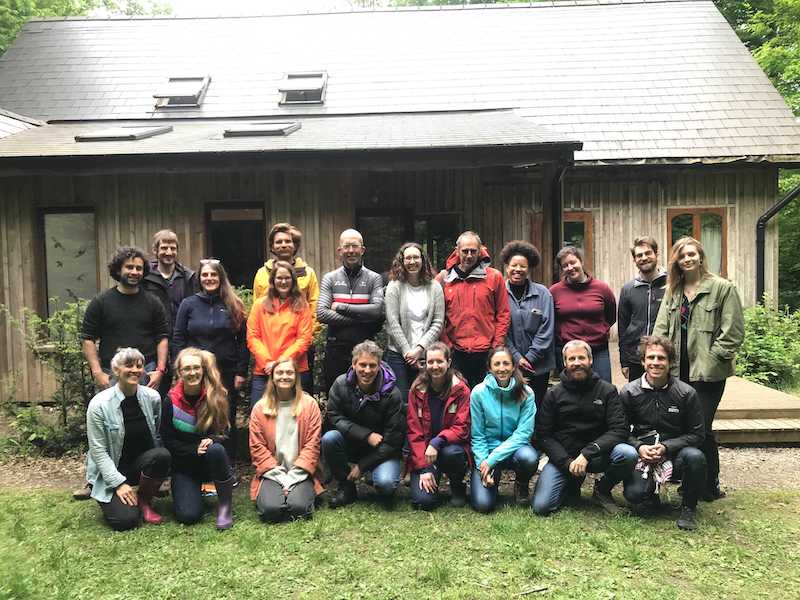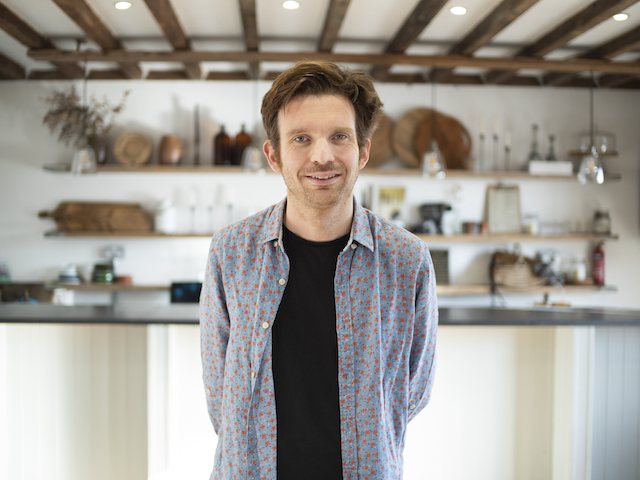Three Horizons
Design process diagrams
Design can be many things. It can be a noun, as in ‘I like good design’, or, ‘I don’t think the design is very good’. It can be an adjective, as in ‘designer sunglasses’. And it can be a verb, as in ‘we are designing a new concert hall’.
It is its use a verb that I address primarily in my teaching. By thinking of design as something that we do, rather than something that is created, we can work on doing the designing better.
If we focus on design as something that we do, then the next question we can ask is what does the process of doing design actually involve, and what frame of mind do we need for each stage.
In this entry we explore two models for describing design as a process. These models are the genesis for continuous, place-based design, an approach to design that is more compatible with the goals of regenerative design.
Chevron diagram
This is the model that I use when I first talk to people about design. When I think of design as a process, I think of my hands held up in front of me like two opposing chevrons. These chevrons conjure up for me four distinct phases in the design process. The four phases are:
- Starting – listening to others
- Divergent thinking – having ideas
- Convergent thinking – improving ideas
- Selling – convincing others
In my mind I see the process as something that looks like two opposing chevrons, like this <>
Something starts from very little, blows up into many possibilities and then shrinks back down to a final, well-resolved output.
Each of these phases of operation requires a different mode of thinking. Each of these modes of thinking is something that we can teach.
Think Up Design Process Diagram
My model is very simple, and is in fact a simplified version of the Think Up Design Process Diagram.

Based on a work at https://thinkup.org/describing-design-as-a-process/
In this model, design is as the heart of a project process that starts with the identification of some sort of need and leads to something that is used. Here is an overview of each of the stages, each of which can afford longer exploration.
Need – the process begins with identifying some sort of need. That need can be felt by a client, a group of people, an ecosystem.
Brief – the stage at which the brief for the design work is defined. It is against the brief that we will test our ideas. But the brief can never be fully known because of the designer’s paradox and system complexity. We will have much more to say on this.
Research – the stage in which we gather together all the creative inputs to the idea conception phase. (See filling the Kalideascope – creative inputs in the moment).
Conceive – the stage at which we develop our ideas in response the brief and drawing on inputs from our research. In reality our we are usually having ideas right the way through the design process, but it is valuable to identify it as a distinct stage in order to give it attention, to make time for it, and to invest in having better ideas. (See what is an idea and the Kalideascope model for idea generation).
Model – the stage at which we turn our ideas into something we can communicate and test. This is another often-forgotten about stage in the design process. An idea is a pattern in the brain that happens when our neurones fire. To test our ideas we need a way to get them out of our head into some sort of thing – a model – that we can test.
Test – the stage at which we test our ideas, in the form of models, against the brief. This relationship between the brief, the tests we create and the models we use to carry them out is important to understand in order to have a rigorous design process.
Judge – the stage at which we descide on the basis of all the tests if the idea is adequate. An idea may have passed all the tests and still not be adequate. In which you need to go back to your brief to try to understand what is unsaid that needs to be said in order to develop a better design.
Make – the stage at which we start to build the design. This distinction of modelling and making is particularly relevant in the built environment where our modelling might involve simulations, but the making involves large volumes of construction materials. In other areas of design in which it is possible to work on live, usable versions of the design, then there is little distinction between the make model and make stages.
Use – the stage at which what we have design enters into use.
Learn – the stage at which we learn from the design in use. In manufacturing industries, there tends to be a tight feedback loop between use and design. We call it quality control. In construction there is usually a very poor feedback loop between use of the design and the design of the next project.
There are feedback loops at every stage of the process. Developing an idea can lead to new insights about the brief. Writing the brief can cause us to challenge the brief. When we come to judge the final design, we may have cause to come back and change brief.
Constructivist Regenerative Design Lab
What if each construction project left the eco-system richer than before? What if humans could design with nature rather than in spite of it? What if engineering and construction could restore our human and natural systems?
The answer is in regenerative design. But how do we turn its principles into practice? Through experimentation, reflection and communication.
The Constructivist Regenerative Design Lab is a six-month accelerator programme for leading engineering and construction industry professionals to support each other to apply regenerative principles in practice.
Our mission is to find out what works and communicate it to our organisations and the rest of industry.
Supported by Engineers Without Borders UK and with funding from the Royal Commission for the Exhibition of 1851.
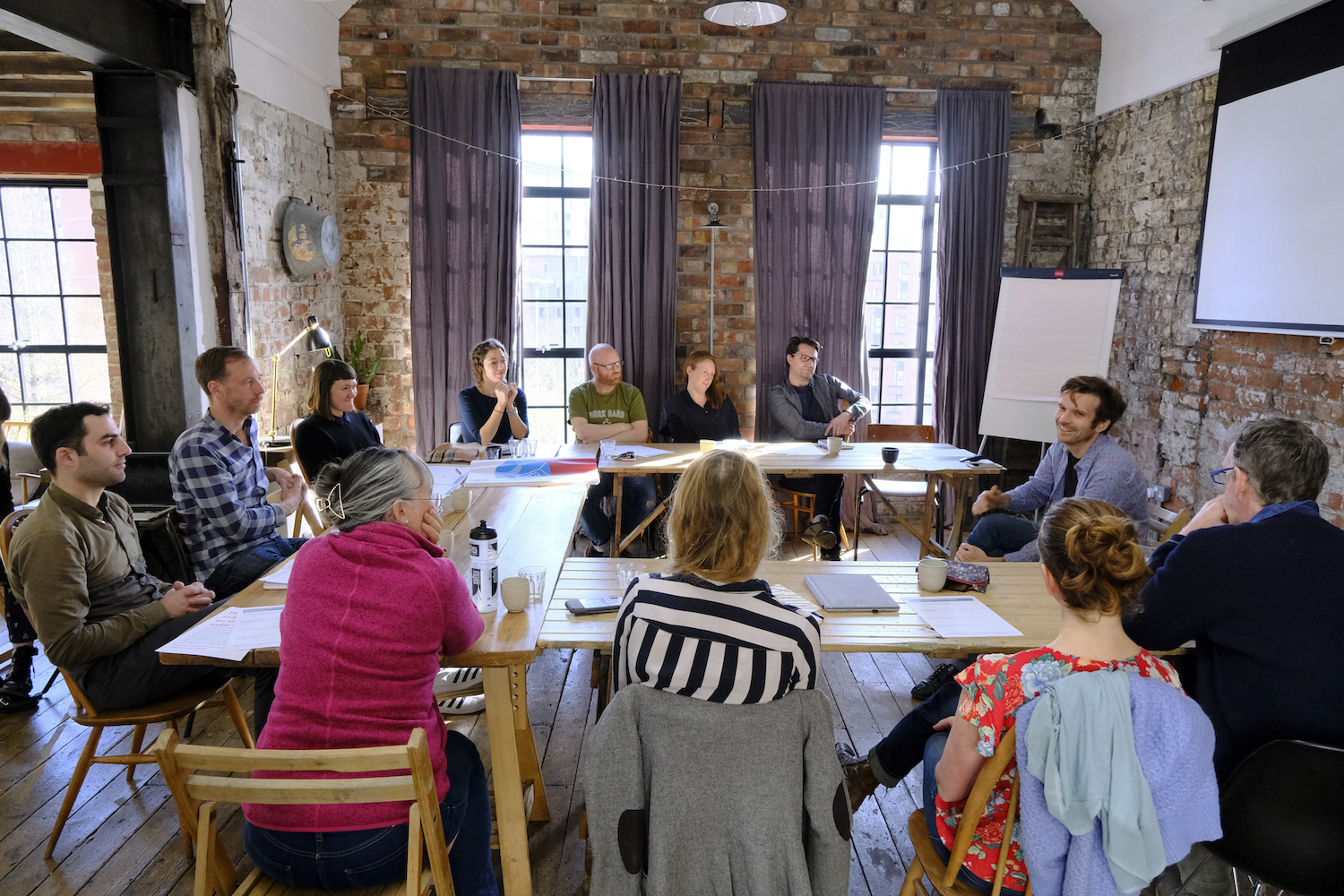
Inputs/Oututs
Inputs
You – a leading engineering or construction industry professional – and 10-15 others who see regenerative design as the future and want to make it reality. You will be the peers who support and constructively challenge each other on the journey.
Real problems – be they design-based, organisational or strategic – regenerative design principles need to solve the real problems we face. These become the raw materials for the lab.
Ecosystems – regenerative design solutions are specific to the ecosystems in which we are working. That eco-system and your connection with it becomes an intrinsic part of the journey.
Outputs
Individuals will be supported on a personal development journey, increasing their awareness and skill in regenerative design practice. They will leave with a toolkit of approaches and hopefully a transformed relationship with the ecosystem they are part of.
Organisations will benefit from a key member of their team introducing innovative regenerative design practice into their projects. The Lab also aims to provide organisations with an opportunity to fulfil their regenerative design practice commitments.
Industry will benefit from the shared results of these experiments in regenerative design practice. Together, the outputs from the lab will feed into the creation of the Pattern Book for Regenerative Design in the Built Environment. These are the patterns for thinking about regenerative design that can enable influential designers and construction-industry professionals to shift the system’s rules and interrelationships towards more regenerative outcomes.
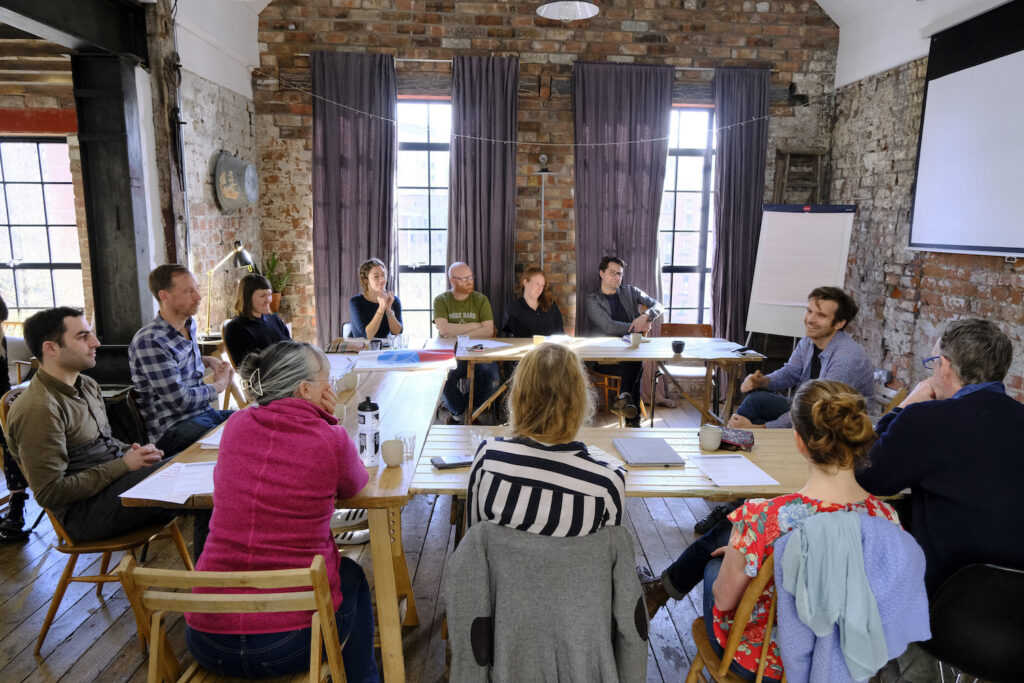
Method
Over six online workshops and three one-night residential stays, participants will:
- unpack the principles of regenerative design.
- experiment through application of principles in the workplace
- explore application of regenerative practice in their own lives
- reflect on the impact of this action on their design work
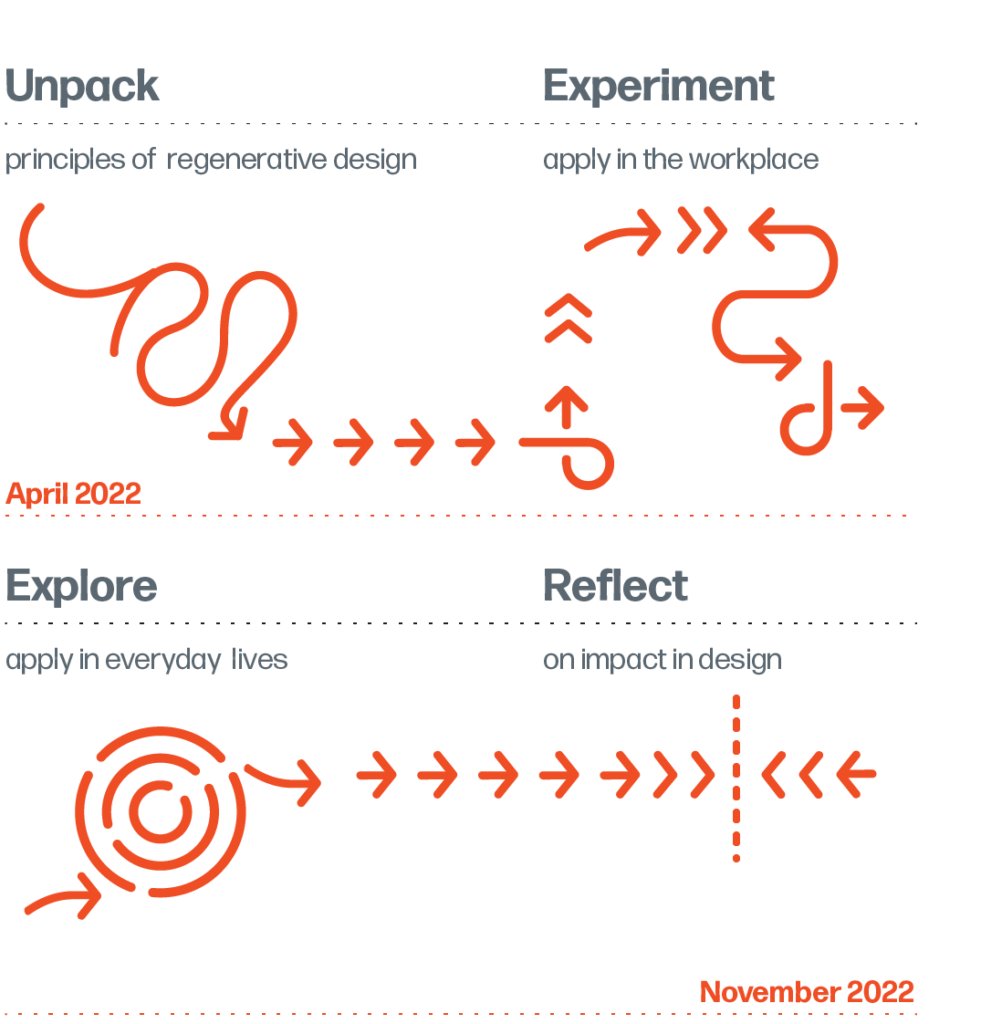
The lab is based on a peer-supported, action-learning approach. We form the lab by helping each other to identify what we want to understand about regenerative design. We each identify a workplace challenge with which we can experiment and support each other in applying principles of regenerative design in practice. Through cycles of action and reflection, we experiment and learn from each other.
Between sessions, groups within the lab meet on an informal basis to check-in on each other’s progress, and you have access to coaching from the facilitators.
I took up engineering in order to practise philosophy
I took up engineering in order to practise philosophy
Ove Arup
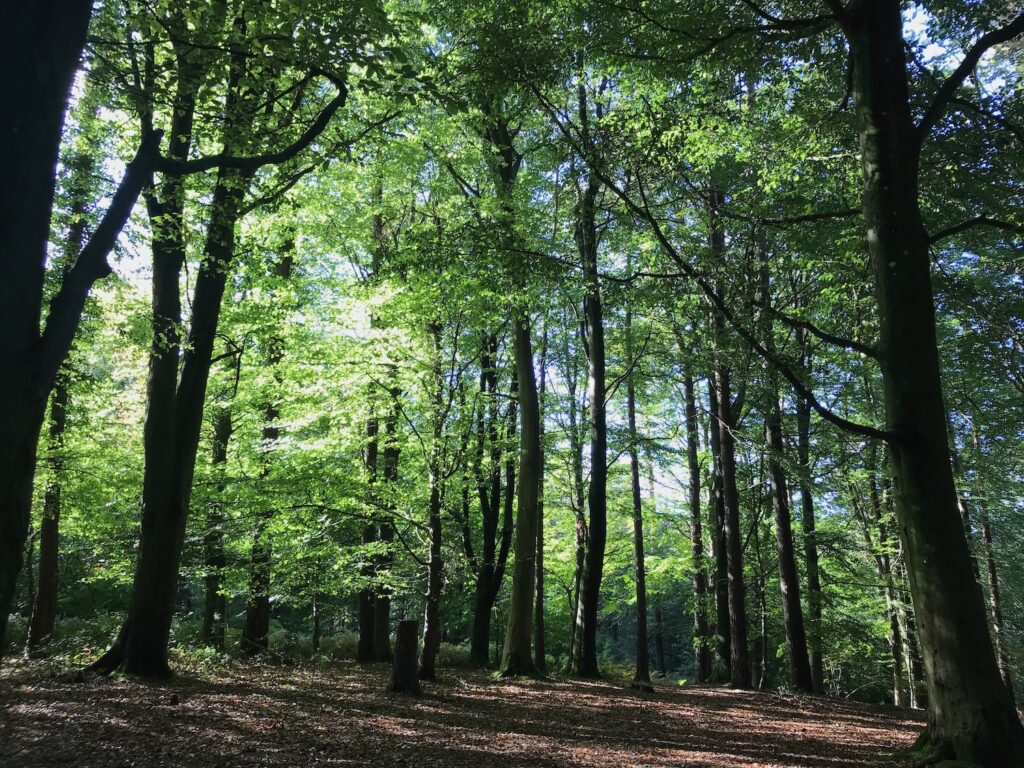
Reconnect with natural systems
Our forest lab is located at Hazel Hill Wood, where we will be running three seasonal residential sessions to explore our relationship with natural ecosystems. Hazel Hill is an off-grid education centre situated in 70 acres forest where for 30 years people have come to connect with nature. It combines indoor workshop space and accommodation with access to a thriving forest with a range of ecosystems to explore.
We will take an experimental approach and observe, experiment, measure and learn from these complex natural systems.
Participants will engage in a transformative process to shift perspectives away from believing we are separate from the natural world.
‘When we can think as part of a system, we can better self-regulate to thrive within the limits of that system’.
Looby Macnamara

Application, facilitators, programme and pricing
Application process
Applications are now closed for the Regenerative Design Lab that starts in April 2022. If you are interested in joining the next lab, due to start in early 2023, please drop us a message and we will keep you posted.
The 15 places on the lab are open to leaders and future leaders in engineering and construction. You should be passionate about shifting engineering and construction away from a paradigm of growth and destruction and towards a paradigm of repair and renewal. We welcome applications from industry, academia and supporting organisations. You need to have some body of experience to draw upon and the opportunity to explore and apply regenerative principles in practice.
To assemble a balanced group of participants in the lab, we are asking people interested in joining to go through a simple application process. The closing dates for applications is the 4th March 2022. We will invite the short-listed candidates for a phone interview by mid-March and places will be confirmed by end-March.
Meet the facilitators
Oliver Broadbent
Course Director – Oliver is founder of Constructivist, writer, international speaker on creativity in engineering and an award-winning design teacher.
Ellie Osborne
Co-facilitator – Ellie is a researcher, designer, coach and collaborator who works at the intersection of innovation, systems thinking, future trends and personal growth.
Programme dates
- April 5th (10am – 12pm) – kick-off online meet
- April 28th (9am – 12pm) – skills development online workshop
- May 11th (11am) – 12th (3pm) – Spring Residential at Hazel Hill Wood
- June 8th – (9am – 12pm) – skills development online workshop
- July 5th (11am) – 6th (3pm) – Summer Residential at Hazel Hill Wood
- August – summer break
- September 14th (9am – 12pm) – skills development online workshop
- October 4th (9am – 12pm) – skills development online workshop
- November 1st (11am) – 2nd (3pm) – Autumn Residential at Hazel Hill Wood
We have varied the days of the week on which programme activities are scheduled in order that the schedule does not consistently clash with part-time workers’ days off.
As well as committing to attending the sessions, participants are expected to spend time during their working week to find ways to apply regenerative principles in practice and to reflect on the impact of their actions.
Pricing
We are offering places on the course at two different prices to enable participants from different kinds of organisations to pay what they can afford.
£1,200 – Corporate rate. Intended for small, medium and large organisations who have a commercial interest in developing and contributing to regenerative design practice.
£700 – Self-funding/micro/NGO – Intended for individuals, people from micro organisations and NGOs who may be able to afford less but have just as valuable a contribution to make.
We commit to making at least five places available at the self-funding/micro/NGO rate.
“Oliver Broadbent is a brilliant and provocative trainer. This is time and money well spent, especially for those in senior management of professional services firms.”
Ben Hickman
Making online workshops better for humans
18 months since the pandemic started people are tired of working online. But online work has become a necessary part of modern work. So how do we make sure our online workshops are engaging productive, productive and worthwhile?
That’s what our ‘how to run a great online workshop online workshop‘ is here for. Today we kick off a new series of this delivery programme for one of our partner clients. It’s training that we run for in-house teams to help bring the online workshop experience alive.
This workshop combines so many of the things that motivate us at Constructivist: bring people together, finding the humanity in our work and working with the world as it is to bring about better outcomes.
Sir Misha Black Award for Innovation in Design Education
I am really excited and honoured to share with you the news that I have just been awarded one of the 2020 Sir Misha Black Awards for Innovation in Design Education. The Award commemorates the life and work of design and architect Sir Misha Black. It was created in 1999 to honour the exceptional work of a teacher, team, department, or course within or between educational establishments in the UK.
Continue reading “Sir Misha Black Award for Innovation in Design Education”The Return of Training on what to do after declaring a Climate Emergency
It’s been a year since many engineering and construction firms declared a climate and biodiversity emergency. Six months since the pandemic struck. But the climate clock is still ticking and the world is still heating. Are we one tenth of the way we need to get to in this decade to avoid the worst kind of climate breakdown?
In hindsight, making the declaration is the easy part: the difficult part is knowing what to do next. That is why we created the course ‘Training on what to do after declaring a Climate Emergency’. It recognises that the emergency status is a new operating paradigm for most organisations, and that within those organisations there will be individuals and teams whose job it is to work out how to respond. We created this course to support those people.
Continue reading “The Return of Training on what to do after declaring a Climate Emergency”Guided Q&A versus guided plenary
I’m writing a quick post here to share a response I am providing to a recent attendee of our online facilitation course. The question relates to two of the four facilitation modes that we teach: Guided Q&A and Guided Plenary.
Continue reading “Guided Q&A versus guided plenary”Follow-up notes on keeping a briefing diary
As part of our introduction to conceptual design course I ask participants to spend a week keeping a briefing diary. The aim is two-fold: to recognise that design briefs come in all shapes and sizes, not just in a formal design context; and to give participants the chance to apply the tools we discussed for picking apart a brief.
Continue reading “Follow-up notes on keeping a briefing diary”Conceptual Design for Rebel Engineers
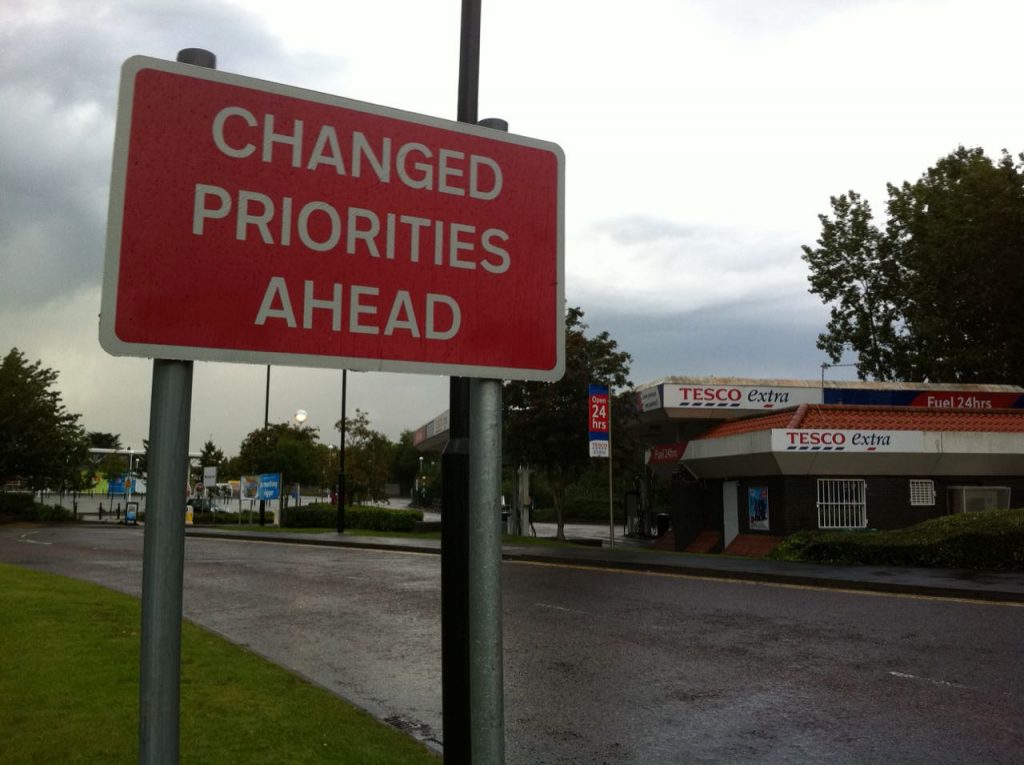
I am an engineer. Engineers take decisions about risk all the time by combining an assessment of likelihood of an event happening and an assessment of the consequences. The IPCC report makes clear that unless we limit global temperature rises to 1.5 degrees above pre-industrial levels then the likelihood of climate breakdown is very high and the consequences of climate breakdown are very severe – possibly existential.
We therefore need to act, by taking significant, coordinated, cross-party and effective action quickly.
But what can I do?
Continue reading “Conceptual Design for Rebel Engineers”
